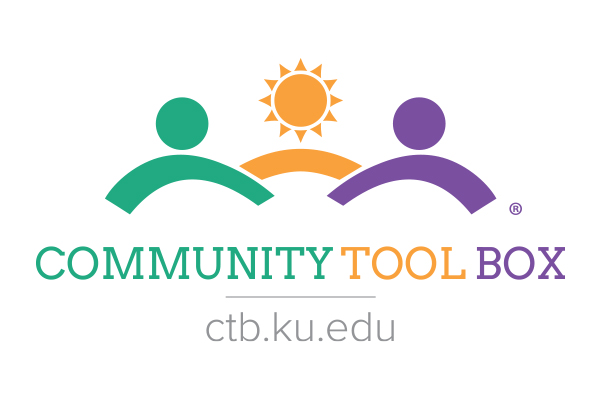Recommended Readings
We recommend the following related readings from the Community Tool Box:
Chapter 2, Section 11: Health Impact Assessment
Chapter 2, Section 13: MAPP: Mobilizing for Action through Planning and Partnerships
Chapter 3, Section 1: Developing a Plan for Identifying Local Needs and Resources
Chapter 3, Section 2: Understanding and Describing the Community
Chapter 3, Section 3: Conducting Public Forums and Listening Sessions
Chapter 3, Section 4: Collecting Information about the Problem
Chapter 3, Section 6: Conducting Focus Groups
Chapter 3, Section 7: Conducting Needs Assessment Surveys
Chapter 3, Section 8: Identifying Community Assets and Resources
Chapter 3, Section 10: Conducting Concerns Surveys
Chapter 3, Section 12: Conducting Interviews
Chapter 3, Section 13: Conducting Surveys
Chapter 3, Section 14: SWOT Analysis: Strengths, Weaknesses, Opportunities, and Threats
Chapter 3, Section 16: Geographic Information Systems: Tools for Community Mapping
Chapter 3, Section 19: Using Public Records and Archival Data
Chapter 3, Section 20: Implementing Photovoice in Your Community
Chapter 3, Section 21: Windshield and Walking Surveys
Chapter 7, Section 2: Promoting Participation Among Diverse Groups
Chapter 7, Section 6: Involving Key Influentials in the Initiative
Chapter 7, Section 7: Involving People Most Affected by the Problem
Chapter 17, Section 5: Addressing Social Determinants of Health and Development
Chapter 18, Section 2: Participatory Approaches to Planning Community Interventions
Chapter 19, Section 1: Criteria for Choosing Promising Practices and Community Interventions
Chapter 37, Section 2: Information Gathering and Synthesis
Chapter 37, Section 5: Collecting and Analyzing Data
Chapter 38, Section 9: Gathering and Using Community-Level Indicators
Toolkit: Assessing Community Needs and Resources
Toolkit: Increasing Participation and Membership
Toolkit: Enhancing Cultural Competence
Toolkit: Creating and Maintaining Coalitions and Partnerships
